Trump, Kelly, & The Coast Guard: Exclusive Interview With Adm. Zukunft
Posted on
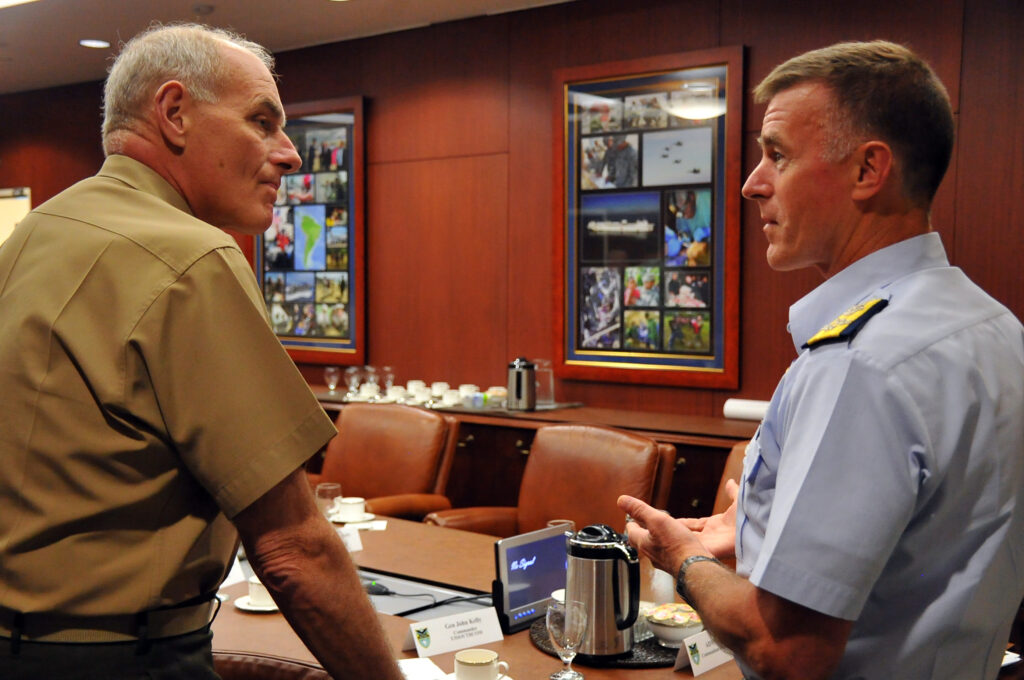
Coast Guard Commandant Adm. Paul Zukunft (right) meets with then-Southern Command chief Gen. John Kelly, now Trump’s nominee for Secretary of Homeland Security.
With the election of Donald Trump as the next President of the United States and with Trump’s nomination of Gen. John Kelly for Secretary of Homeland Security, life is going to change for the US Coast Guard.

Gen. John Kelly
Trump’s campaign focused intently on border security, asking a fundamental question: Why do we send thousands of troops abroad to defend other people’s borders when we don’t defend effectively our own? Trump has also indicated that he wants to revive shipbuilding in the United States. Both these presidential priorities could benefit the US Coast Guard (USCG), whose role, after all, is to secure the maritime border in ships.
Since 2002, the Coast Guard has also been part of the Department of Homeland Security. With Gen. Kelley, DHS is very likely to change from a grab-bag department amalgamating assorted agencies to a coherent organization focusing on new concepts of operations (CONOPS) for border security and the other priority missions. No agency would benefit more from such a shift than the Coast Guard, an agency driven by CONOPS and which plays a particularly crucial role in US Southern Command (SOUTHCOM), which Gen. Kelly once led.
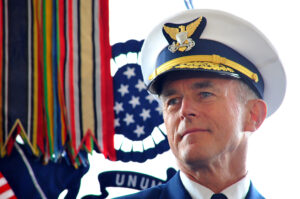
Adm. Paul Zukunft
I had a chance to discuss the way ahead for the Coast Guard with the service’s Commandant, Admiral Paul Zukunft, in his Washington, D.C. office on November 30, 2016. The previous time I had met with Adm. Zukunft was when he was working at the USCG headquarters in California, responsible for Pacific operations. Later, he would become Commander, Coast Guard Pacific Area as well.
We did not specifically discuss the presidential transition in the interview, and Zukunft went out of his way to emphasize the leadership of the current head of DHS, Secretary Jeh Johnson. But the Commandant highlighted some of the key tasks which the Coast Guard will prioritize in the new administration.
With regard to the Western Hemisphere, Zukunft underscored that the Coast Guard has taken the lead on security in America’s backyard, while the Department of Defense (DoD) is heavily committed overseas. “If you look at DoD’s statement of key priorities, they are not focused on the Western Hemisphere,” Zukunft said. We have the responsibility by default and design.”
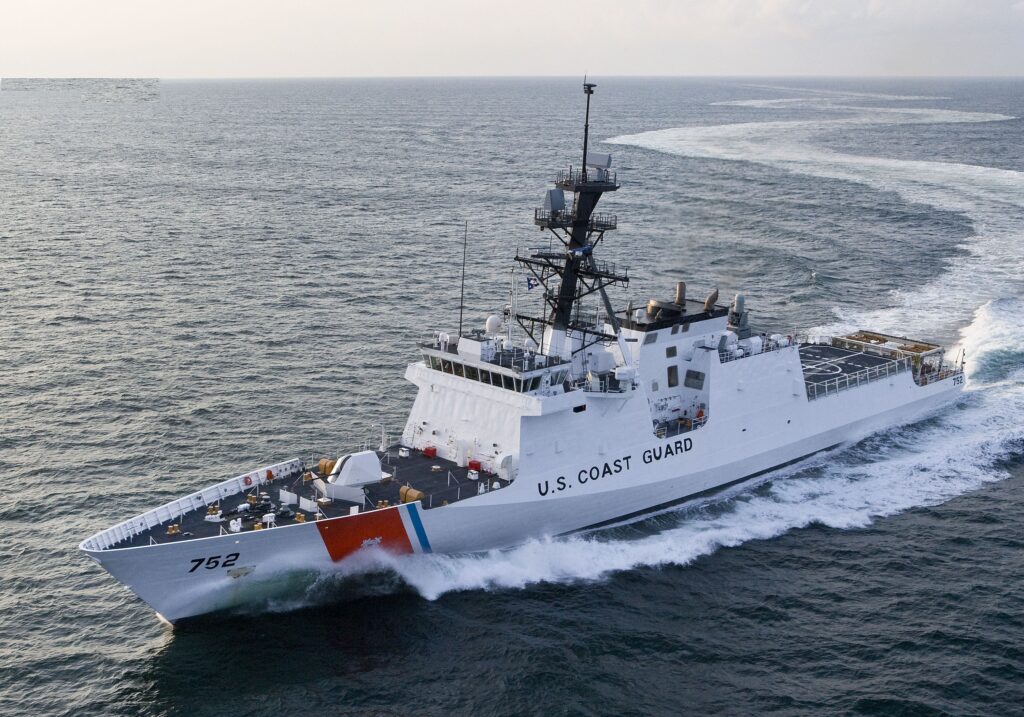
Coast Guard National Security Cutter USS Stratton
Short On Ships, Long On Intelligence
To secure the Americas, the Coast Guard must make the best possible use of a strictly limited fleet of aircraft and ships. How? “A key requirement for mission success is leveraging intelligence,” Zukunft said. “We work intelligence across our agencies and internationally. This is crucial to provide risk-informed decision-making. We have constrained resources and we need to prioritize threats across the spectrum of operations. For example, in dealing with the afloat drug traffic, we focus on the transit zones and work our ability to find choke points on the water and ashore to deal with the drug threat.”
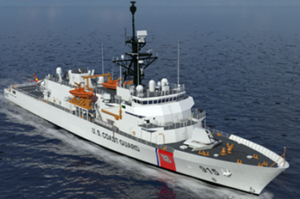
Notional design for the Coast Guard’s Offshore Patrol Cutter
Even with the best intelligence, however, a ship or aircraft can only be in one place at a time, so the drawdown of presence assets is deeply felt.
“The Navy’s Perry-class frigates have gone away,” said Zukunft. “On the best of days, you have three Coast Guard ships in the Caribbean. That is your entire force to deal with threats in that region.”
The Coast Guard has clear shortfalls in shipbuilding. The Commandant highlighted two key ones, namely rapidly building up the fleet of Offshore Patrol Cutters and building icebreakers so that the US can be an effective player in the Arctic.
Until recently, the Offshore Patrol Cutter program has been overshadowed by the National Security Cutters, the Coast Guard’s largest vessels. “We have been struggling to get a program of record of the National Security Cutter across the finish line,” Zukunft said. “This is really the biggest acquisition for our service to provide the presence and enforcement assets which can provide for enhanced safety in security in our operations worldwide, but notably for extended border security for the United States.”
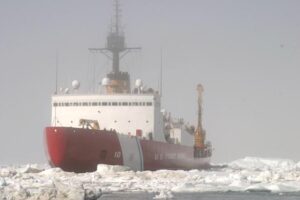
Coast Guard icebreaker Polar Star
The icebreaker issue, meanwhile, is inextricably intertwined with the evolution of US Arctic strategy. “We clearly need a new icebreaker,” Zukunft said, but it won’t just break ice: “We’ve written the operational requirement documents that make the icebreaker a floating command and control platform. We can put a skiff on it. It’s also an instrument to enforce sovereignty.”
“It is extremely hard to predict what that area’s going to look like in 20, 30 years, but without a new icebreaker, we will be observers more than participants in shaping Arctic safety and security,” Zukunft predicted. “An independent High Latitude analysis confirmed that we need three and three – three heavy and three medium icebreakers…And to be clear, the USCG is the key sea service for the Arctic: The USN (US Navy) has in effect devolved Arctic security responsibilities to the USCG.”
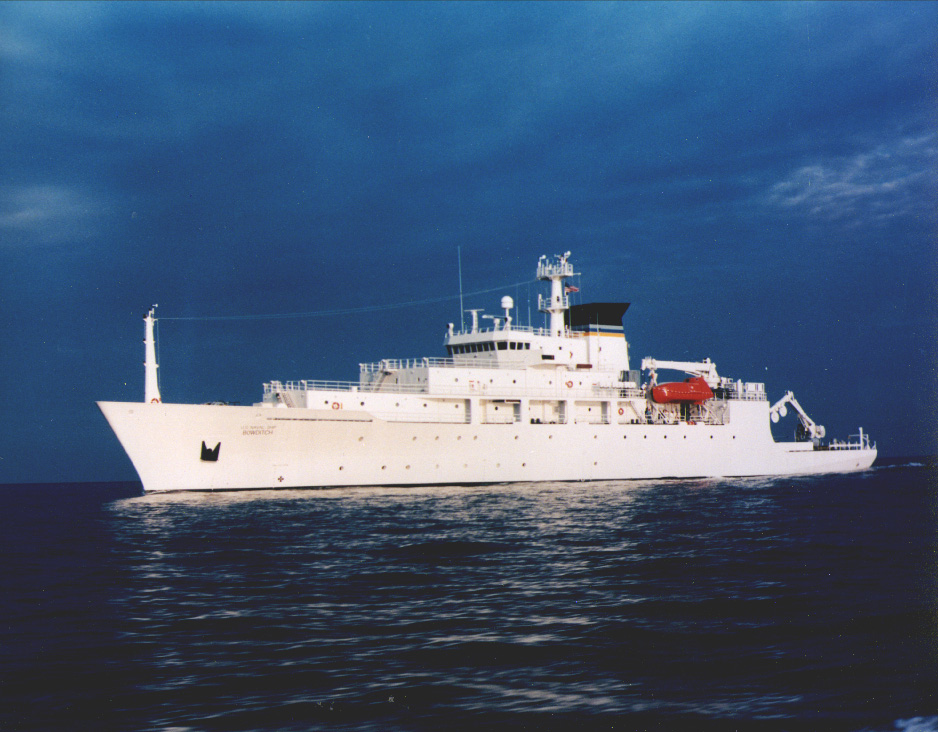
Military Sealift Command survey ship USNS Bowditch, which was retrieving an unmanned underwater vehicle in the South China Sea when a Chinese warship snatched the drone.
The Best Defense In Depth (Is A Good Offense)
While the Coast guard has few ships, it has plenty of space — and it tries to turn the vast areas of the Western Hemisphere from a problem into an asset. The USCG looks at homeland security as not “goal line defense” but rather an extended security and defense approach. “When I think of a border, it begins at the territorial seas of the Pacific and Caribbean nations, which we deal with,” Zukunft said.
“We have the ability to detect anomalies, we have authorities, and then when it comes down to the resources to be able to target that threat and meet it on an open playing field, rather than a goal line defense,” Zukunft continued. “You might call this a layered defense strategy, but I prefer to call it an offensive approach, whereby the USCG can leverage its authorities as far removed from the goal line as possible and practicable.”
The Coast Guard’s jurisdiction can extend even to the South China Sea. While our interview occurred before a Chinese warship seized a US Navy drone off the coast of the Philippines — essentially an act of piracy — Zunkunft told even then that he had requested sending enhanced USCG presence to the region.
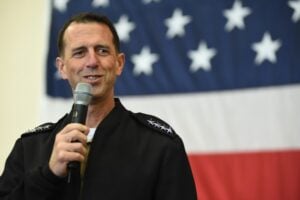
Adm. John Richardson
“I have discussed with the CNO (Chief of Naval Operations Adm. John Richardson, the senior officer in the Navy) the concept that we would create a permanent USCG presence in the South China Sea and related areas,” Zukunft said. “This would allow us to expand our working relationship with Vietnam, the Philippines, and Japan. We can spearhead work with allies on freedom of navigation exercises as well.”
Before the drone seizure, China had quite consciously used its own coast guard more aggressively than its navy. With no Coast Guard vessels of its own in the region, the US was in the awkward position of countering “civilian” Chinese vessels with American warships — which Beijing could denounce as escalation — or letting the Chinese coast guard go unchecked.
At the heart of the extended border and maritime security mission for the US Coast Guard, and what makes it so central to any effective policy, are the authorities held and executed by the service.
“When you lay a map of the world flat and you look at where the USCG has authority, it reaches right up to the territorial seas in the countries surrounding the US and, in many cases, inside the territorial seas,” Zukunft said. “With the agreements we have now worldwide, (if) an anomaly in the manifest of cargo ship alerts us to a threat, (we don’t) have to wait until it shows up. We can intercept at sea and do a security check” far from US ports.
In spite of the equipment shortfalls, the USCG is crucial to any effective border security approach likely to be adopted by the Trump Administration, and General Kelly working with the USCG will likely shape an innovative approach.
“We see our role as providing a key contribution to national security in dealing with non-state actors, whether is the threat of piracy, transnational crime, or drug dealing,” Zukunft said. “The USCG provides unique authorities with Titles 10 and 14 (of the US Code) to provide for a unique instrument of security, particularly when one is looking at a more offensive approach to protecting our borders.”
Subscribe to our newsletter
Promotions, new products and sales. Directly to your inbox.
